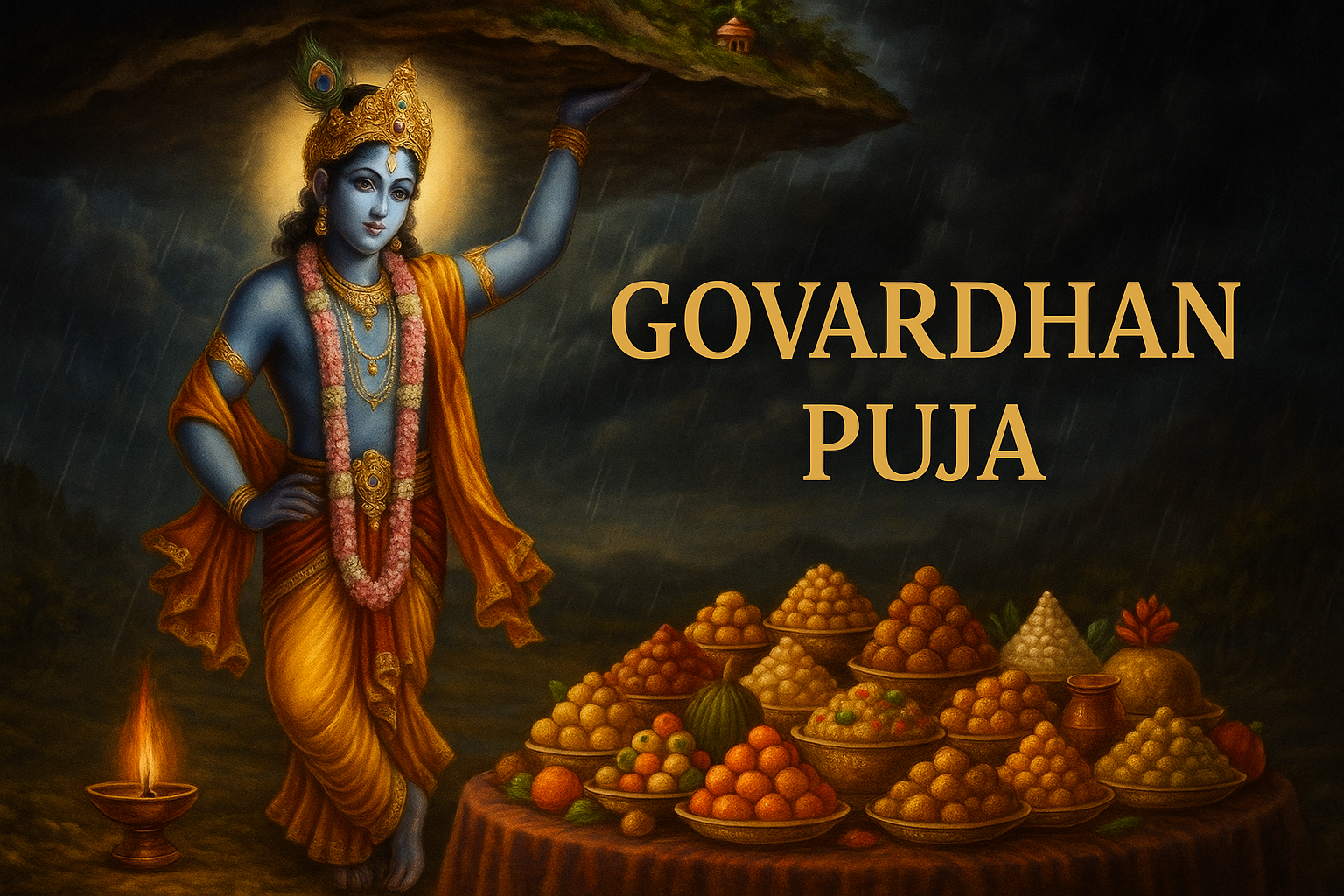In 2025, Govardhan Puja (also called Annakut Puja) will be celebrated on Wednesday, 22 October the day after Diwali. The Pratipada Tithi (first day of the bright fortnight in Kartik) begins on 21 October at 5:54 PM and ends on 22 October at 8:16 PM. The auspicious morning muhurat for the puja is approximately 06:26 AM to 08:42 AM, and the evening muhurat from 03:29 PM to 05:44 PM in many places.
Background & Significance
Govardhan Puja commemorates one of the most beloved episodes in the life of Lord Krishna. In the region of Gokul / Vrindavan, the people traditionally worshipped Indra, the god of rain, believing that through his favor, rains would come to nurture their crops and cattle. But young Krishna suggested they instead worship Govardhan Hill, which provided grass, shelter, and natural support for their livestock.
Indra, angered by this shift, sent torrential rains and storms to punish the villagers. To protect them and their animals, Krishna lifted the entire Govardhan mountain on his little finger and held it aloft for seven days until Indra realized his mistake, reconciled, and withdrew the storm.
This act symbolizes the divine protection granted to devotees who place their trust in God, and it also carries a message of environmental respect — honoring nature itself as sacred and essential for life.
Rituals and Observances
On Govardhan Puja day, devotees perform many traditional rituals. Some of the common practices include:
- Creating a symbolic Govardhan hill: Cow dung is often shaped into a miniature hillock, decorated with flowers, turmeric, and vermilion.
- Annakut (Mountain of Food) offering: Devotees prepare Chappan Bhog (56 varieties of vegetarian dishes) or other large feasts and offer them to Lord Krishna as thanksgiving.
- Parikrama and worship: People circumambulate the Govardhan hillock or the symbolic mound, sing bhajans, chant mantras, and perform aarti.
- Worship of cows and nature: Since Govardhan Hill and cattle are interlinked in the legend, cows are honored, and nature is worshipped as a form of gratitude.
- Evening prayers & offering: Many also perform puja in the evening during the evening muhurat period.
Temples, especially in Mathura, Vrindavan, Nathdwara, conduct grand Annakut celebrations, with thousands of devotees gathering to witness the spectacle.
Spiritual Lessons & Cultural Impact
Govardhan Puja is not just a ritual; it carries many deeper meanings:
- Devotion over ego: It teaches that sincere devotion and humility are more powerful than pride or ritual performed without faith.
- Respect for nature: Krishna’s guidance to worship Govardhan Hill elevates nature as sacred and reminds humanity of its dependence on the earth, water, and environment.
- Divine refuge: The legend reinforces that God provides shelter and protection to devotees in times of crisis.
- Community spirit: The Annakut offerings and communal prayers strengthen bonds among devotees, as many people participate in preparing the offerings and celebrating together.
In many regions, Govardhan Puja coincides with other observances: in Gujarat and Rajasthan, it is linked with Bali Pratipada or Padwa, marking the return of King Bali. In some cultures, it is also celebrated as the Gujarati New Year

